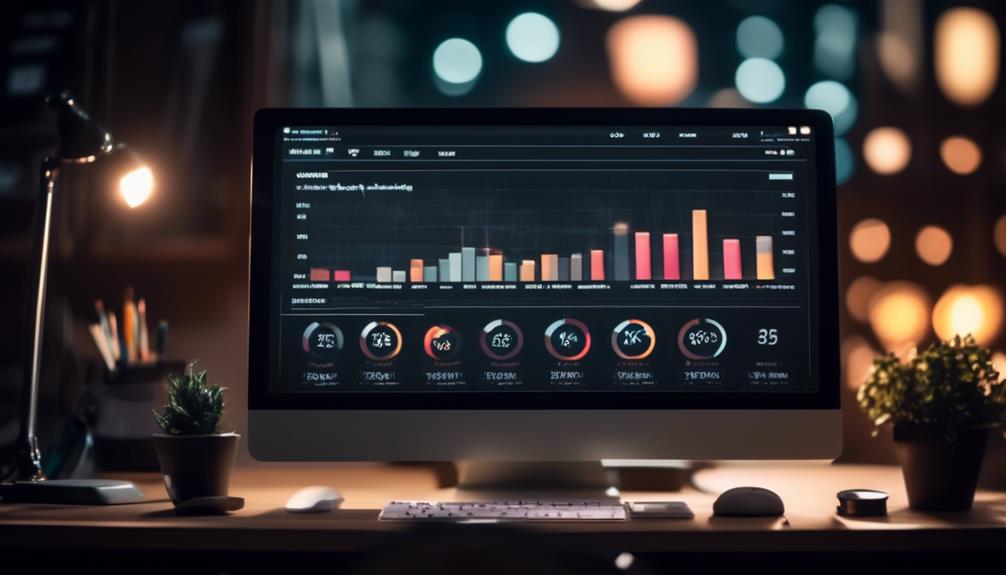In the fast-paced digital landscape, successfully managing email campaigns can be likened to orchestrating a well-choreographed ballet performance. Each step must be executed with precision to ensure a harmonious outcome. From understanding the role of a virtual assistant to enhancing subscriber engagement, the journey towards achieving email campaign success is multifaceted. But where do you begin this intricate dance of email management? Let’s start by unraveling the first essential step that sets the stage for a seamless email campaign strategy.
Role of a Virtual Assistant
In email campaign management, a virtual assistant plays a crucial role in streamlining tasks and enhancing productivity. They are essential for effective time management and ensuring seamless communication within the team. Virtual assistants excel at organizing schedules, prioritizing assignments, and optimizing workflows to meet deadlines efficiently. Their strong communication skills enable them to liaise between team members, clients, and vendors, facilitating smooth collaboration and information exchange.
When it comes to time management, virtual assistants are adept at creating schedules, setting reminders, and managing deadlines effectively. By taking on routine tasks such as scheduling meetings, responding to emails, and updating project statuses, they free up valuable time for you to focus on strategic aspects of email campaign management. Their ability to multitask and handle various responsibilities simultaneously is a game-changer in ensuring that no crucial detail falls through the cracks.
Moreover, virtual assistants with excellent communication skills ensure that all team members are aligned, well-informed, and working towards common goals. They act as a bridge, transmitting feedback, relaying instructions, and fostering a cohesive work environment. By maintaining open lines of communication, virtual assistants contribute to improved efficiency, better decision-making, and overall campaign success.
Crafting Effective Emails
Virtual assistants‘ strong organizational skills and communication proficiency pave the way for crafting effective emails that resonate with your audience and drive engagement. When it comes to crafting emails that capture attention, personalization techniques play a crucial role. Tailoring your content to address the specific needs and preferences of your recipients can significantly increase open rates and conversions. Utilize data such as past purchases, browsing behavior, or demographic information to create personalized messages that speak directly to each individual.
Equally important are subject line strategies. Your subject line is the first thing recipients see and can determine whether your email gets opened or sent straight to the trash folder. Make it concise, compelling, and relevant to pique curiosity and encourage opens. A/B testing different subject lines can help you identify which ones resonate best with your audience, allowing you to refine your approach for future campaigns. By combining personalization techniques with effective subject line strategies, you can increase the effectiveness of your email campaigns and drive better results.
Subscriber Management
When managing your subscribers for email campaigns, maintaining a clean and engaged list is essential for maximizing the impact of your communication efforts. Effective subscriber management involves implementing segmentation strategies and employing list hygiene techniques to ensure your emails reach the right audience and drive engagement. Here are key steps to enhance your subscriber management:
- Segmentation Strategies: Divide your subscriber list based on demographics, behaviors, or preferences to personalize content and improve relevance.
- List Cleaning: Regularly remove inactive or invalid email addresses to maintain a high deliverability rate and engagement levels.
- Engagement Tracking: Monitor open rates, click-through rates, and conversions to understand subscriber behavior and tailor future campaigns.
- Preference Centers: Provide subscribers with options to choose the frequency and type of content they receive, enhancing their experience and reducing unsubscribes.
Schedule Planning
To optimize the effectiveness of your email campaigns, strategic schedule planning is crucial for reaching your audience at the right times and maximizing engagement. Time management plays a significant role in ensuring that your emails are delivered when your subscribers are most likely to be active. By analyzing data on when your audience is most responsive, you can schedule your emails to have the highest impact.
When planning your email schedule, consider the frequency of your emails to maintain a balance between staying in touch with your subscribers and avoiding overwhelming them. Consistent communication is key to keeping your audience engaged without bombarding them with too many messages.
Furthermore, align your schedule planning with your content creation efforts. Ensure that the timing of your emails coincides with the creation of relevant and engaging content. This synchronization will help you deliver cohesive messages that resonate with your audience and drive better results. By integrating time management with content creation, you can streamline your email campaign management process and enhance its overall effectiveness.
Testing Emails
Consider implementing A/B testing to optimize the performance of your email campaigns and enhance engagement with your subscribers. A/B testing allows you to compare different versions of your emails to see which one performs better, helping you make data-driven decisions to improve your email marketing strategy.
Here are some key areas where A/B testing can make a significant impact:
- Subject Lines: Test different subject lines to see which ones result in higher open rates. Experiment with length, tone, personalization, and emojis to see what resonates best with your audience.
- Call-to-Action: Test different wording, colors, placement, and design of your call-to-action buttons to determine which ones drive more clicks and conversions.
- Content: Experiment with varying lengths of content, images vs. text ratio, video vs. static images, and personalization to understand what type of content your subscribers engage with the most.
- Timing: Test sending emails at different times and days of the week to determine when your audience is most active and responsive.
Tracking Performance
To enhance the effectiveness of your email campaigns, it’s crucial to track performance metrics that provide valuable insights into the impact of your strategies. Monitoring metrics such as click-through rates (CTRs) and conversion rates is essential for gauging the success of your email campaigns. By analyzing these key performance indicators, you can determine which aspects of your emails are resonating with your audience and driving desired actions.
A/B testing is a powerful tool for evaluating different elements of your emails, such as subject lines, call-to-action buttons, or images, to see which variations perform better. By conducting A/B tests and analyzing the results, you can refine your email content to maximize engagement and conversions.
Data analysis plays a crucial role in tracking performance as it allows you to identify trends, patterns, and areas for improvement. By leveraging data analytics tools, you can gain actionable insights that inform your email campaign strategies and help you achieve better results. Stay proactive in tracking performance metrics and utilizing data analysis to continuously optimize your email campaigns for success.
Enhancing Engagement
Get ready to elevate your email game by boosting interactions and maximizing reader participation. Engaging your audience is key to building lasting relationships and driving conversions. Let’s explore how you can enhance engagement and make your email campaigns stand out from the crowd.
Boosting Email Interactions
Enhancing engagement through personalized email content is crucial for boosting interactions with your audience. To maximize email interactions, consider the following strategies:
- Personalization Strategies: Tailor your emails to individual preferences and behaviors.
- Subject Line Optimization: Craft compelling subject lines to increase open rates.
- Interactive Content: Include elements like polls or surveys to engage recipients.
- Call-to-Action (CTA): Use clear and enticing CTAs to prompt action from your audience.
Maximizing Reader Participation
Boost reader engagement by actively involving your audience in your email campaigns through interactive elements and personalized content. Incentive strategies, such as offering exclusive discounts or limited-time promotions, can entice readers to not only open your emails but also click through and take action. Personalized content tailored to your subscribers’ preferences and past interactions can make them feel valued and more likely to engage with your emails. Encourage feedback by including surveys or polls to gather insights and show that their opinions matter. By creating a two-way interaction, you build a stronger connection with your audience, increasing the chances of them becoming loyal customers. Keep experimenting with different engagement tactics to see what resonates best with your readers.
Frequently Asked Questions
How Can I Ensure My Email Campaigns Are Compliant With Data Protection Regulations?
To ensure compliance with data protection regulations in your email campaigns, implement clear consent processes, use opt-in methods, update privacy policies regularly, and provide easy unsubscribe options. Prioritize privacy regulations in your email marketing strategies.
What Are Some Creative Ways to Personalize Email Content for Different Subscriber Segments?
To personalize email content effectively, utilize personalization strategies such as creative segmentation. Targeted content and dynamic customization can enhance engagement. Tailor messaging based on subscriber preferences and behaviors to create a more impactful campaign.
How Can I Effectively Re-Engage Inactive Subscribers in My Email List?
Feeling like a detective, hunt down inactive subscribers by segmenting wisely. Craft enticing subject lines, offer exclusive deals, and create a sense of urgency. Use personalized content to reignite their interest and boost engagement.
What Are Some Best Practices for Optimizing Email Send Times for Maximum Engagement?
To maximize engagement, consider optimal timing for email sends. Study subscriber behavior and conduct A/B testing to determine when recipients are most active. By refining send times based on data, you can boost engagement rates.
How Can I Analyze and Interpret Email Campaign Performance Data to Make Informed Decisions for Future Campaigns?
To analyze email campaign performance data effectively, focus on key metrics like open rates and click-through rates. Use data analysis tools to track trends, identify successful strategies, and make informed decisions for future campaigns.



